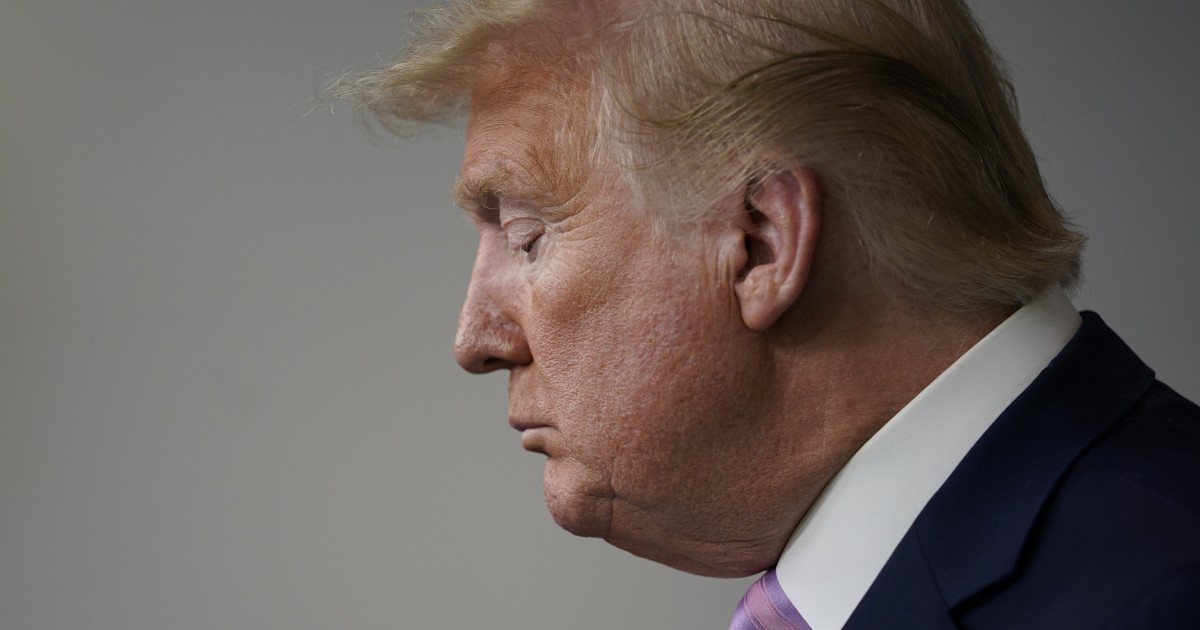
President Trump said he faced the biggest decision of his life as he considers how and when to lift social distancing restrictions credited with vastly reducing the number of deaths that will result from the novel coronavirus.
Trump last month said he hoped to have the country open by Easter Sunday. Instead, churches will stand largely empty over the holiday weekend as he and his officials repeat warnings that now is not the time to ease safeguards.
“I will have to make a decision, and I only hope to God it is the right decision. But I would say without question, it is the biggest decision I’ll have ever had to make,” he said during his regular coronavirus briefing on Friday.
He said he would on Tuesday name the advisers, including governors, mayors, economists, and doctors, who would help plot a course to recovery as part of what he called an “opening-up-our-country council.”
By Friday, the United States death toll stood at more than 18,000 people, according to a tally kept by Johns Hopkins University.
However, Trump’s two key scientific advisers on the White House Coronavirus Task Force said there are encouraging signs that the number of hospital admissions was flattening off across the country.
Nevertheless, that leaves the president with an agonizing decision: lift restrictions too early and be accused of risking lives or lift them too late and be responsible for needlessly plunging the economy further into gloom.
His social distancing guidelines are due to expire on April 30, and he was peppered with questions during the two-hour briefing about what data he would need before lifting them.
“That’s my metrics,” he said, pointing to his head and explaining the choice he faced. “That’s all I can do. I can listen to 35 people.
“At the end, I’ve got to make a decision.”
It made for a reflective moment during what have become rambunctious affairs, with attacks on political rivals, boasts about TV ratings, and clashes with journalists.
The importance of the decision was spelled out in leaked federal projections that suggested COVID-19 cases could spike if shelter-in-place orders and all restrictions were lifted after only 30 days, with the death toll hitting 300,000, according to the New York Times.
“There’s always going to be a risk where something can flare up,” said Trump, adding that he would be prepared to reintroduce restrictions if that happened in future.
Dr. Deborah Birx, White House Coronavirus Task Force coordinator, said the number of new cases was starting to flatten out on graphs, just as it had in Italy a week ago.
“It’s really about the encouraging signs that we see, but as encouraging as they are, we have not reached the peak,” she said. “Every day, we need to continue to do what we did yesterday and the week before and the week before that because that’s what in the end will take us up across the peak and down the other side.”
She said the path forward would involve building up a countrywide picture of infection through the current testing regime, new antibody assays, and the existing surveillance system for identifying the flu-like illness. The idea was to find locations that might offer the first warning of an outbreak, she said, such as nursing homes.
But it was all a step into the unknown. “There’s no literature you can cite that says we did this 20 years ago and what really worked,” she said.
One potential tool is the use of mobile technology to aid contact tracing. On Friday, Apple and Google said they were working together to develop apps that would help users know if they had come into contact with patients who developed COVID-19, helping them to get tested and into quarantine more rapidly.
